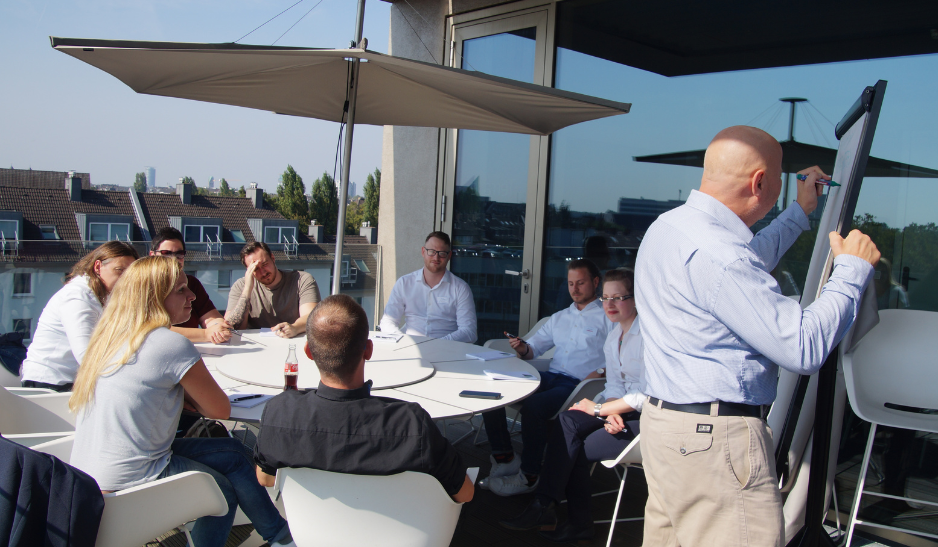Just when you were allowing yourself to think the worst was over, along came component shortages, staff shortages, raw material shortages, rising inflation, rising energy costs, and huge changes to consumer activity. And if the perfect storm caused by Covid and Brexit weren’t bad enough, there’s still the one that dwarfs them: the climate crisis. How are foodservice equipment suppliers meeting the challenges? The Foodservice Equipment Association’s chief executive, Keith Warren, says that the hospitality industry’s ability to adapt will ensure it comes out fighting, stronger than ever – with help from equipment suppliers.
Equipment Supply Chain Challenges
Covid and the resultant effects have meant that many businesses have had to move from just-in-time manufacturing. They’re now working with the significant challenges resulting from a lack of availability of components, raw materials and staff.
A single component not being available means that the finished product cannot be placed on the market. Consequently, we are seeing extended delivery times for foodservice equipment and many other products. This causes challenges for kitchen designers and re-sellers who are trying to plan projects and who need all of the equipment to be in place before the site can go live. There’s also been a considerable increase in the time involved in managing orders once the sale has been made. All of these elements cost time and money.
Brexit issues have not gone away and there are challenges at ports due to the increased administration requirements – this is further delaying imports and exports. FEA has worked hard on this with government in a variety of areas. We welcome the extension of one year in the transition from CE to mandatory UKCA marking for equipment, to 1st January 2023.
There are also the inflationary pressures brought about by the increased costs of raw materials. Stainless steel alone has doubled in 2021. The increasing costs will inevitably lead to the cost of foodservice equipment going up. Manufacturers and importers will try to absorb some of the extra costs, but in the end they can do little other than pass them on.
Tailwinds
Consumers have changed their outlook on eating out of home. The significant growth in delivery has meant that the operator faces pressures in managing both seated restaurant customers and delivery orders simultaneously. This has led to split counters for the respective needs and further investment in dark kitchens, which remove the need for high street, high footfall locations. Greater flexibility and creativity are evident from operators who respond to this change in consumer behaviour.
Equipment companies have also had to respond, not only to the speed of these changes, but also to the increased investment in franchise operations, for example bringing new concepts via increased pop-ups and drive-through opportunities. These developments are reported in the business press with increasing frequency.
The rationalisation of the menu and the changes to opening times, often brought about as a result of staff shortages, have actually seen many operators able to lift their profits as businesses open up. This is leading to investment in the future of foodservice. As with previous recessions, we see hospitality emerge stronger, but in an altered format.
Headwinds
Operators have been hit very hard by the changes in the market. They are still evolving their menus, opening hours and staffing, not only to meet these changes but also to re-establish and strengthen their relationships with customers. This is against a backdrop of challenges to international travel, a slower than expected recovery, cancellations due to fluctuations in Covid and the strategies to manage it, and the myriad supply chain problems.
Increases in prices for energy, food and staff are all significant pressures on businesses. Many will need to start repaying business interruption loans in 2022, putting even more pressure on the bottom line. We have also seen the increase in VAT. It was reduced to 5% initially, then increased to 12.5% from October 2021. It will go back to the standard rate of 20% in April 2022. How much these increases impact on consumer spend in foodservice is yet to be seen – especially given the context of rising household bills and inflation predicted to hit 5% or more during the next twelve months.
Energy
Increases in the cost of energy and the challenges in the energy supply network will bring an increased focus on the energy efficiency of equipment, as was highlighted at COP26. Every business must pull down their carbon emissions. Foodservice equipment is a heavy user of energy, so it offers a major opportunity for the operator to reduce running costs and to make carbon savings, by turning to new energy-efficient appliances.
The UK Government has invested heavily in the development of more categories of products on the Energy Technology List (ETL) and FEA and its members are directly involved in these discussions. FEA’s Five Point Plan is being actively promoted to help transition the old equipment out of the market in order to bring in more efficient replacements through a proactive recycling scheme.
Conclusion
The effects of Covid on the equipment supply chain have been significant. FEA members saw sales drop by 90% (compared to pre-Covid sales) in the second quarter of 2020. However, because of the positive outlook and investment by operators, overall the foodservice equipment industry is performing in excess of pre-Covid trading levels in Q3 & Q4 of 2021.
Once again, a dynamic build-back of foodservice has seen significant investment in new solutions and concepts to meet the demands of the out-of-home eating and drinking markets. We have seen increased development of new sites in the UK, as well as the redevelopment of existing facilities, leading to great pressure on the delivery of projects. This looks set to continue over the course of 2022 and into 2023 as we see a reshaping of the market. It is particularly interesting to note the franchising developments that have arisen to fill previously unexplored gaps in the market.
Inevitably there will be more casualties. There will be sites that can no longer trade on a profitable basis, and others where the owner may not have the will or the cash to face the challenges and the accumulated debt. However, those that have survived thus far have surely demonstrated their ability to adapt, a key requirement in dynamic market conditions. The equipment supply chain will be well able to support these developments – it has the products, the expertise, the design concepts, the initiative and the drive to ensure that the future is positive for the industry in 2022.
The FEA is recognised as the largest and most influential foodservice membership association in the United Kingdom, the FEA represents 190+ member companies across fourteen product categories.
Our remit encompasses the full spectrum of equipment and ancillary services; light equipment and tableware suppliers; and includes suppliers to all the main foodservice and hospitality sectors. https://www.fea.org.uk





